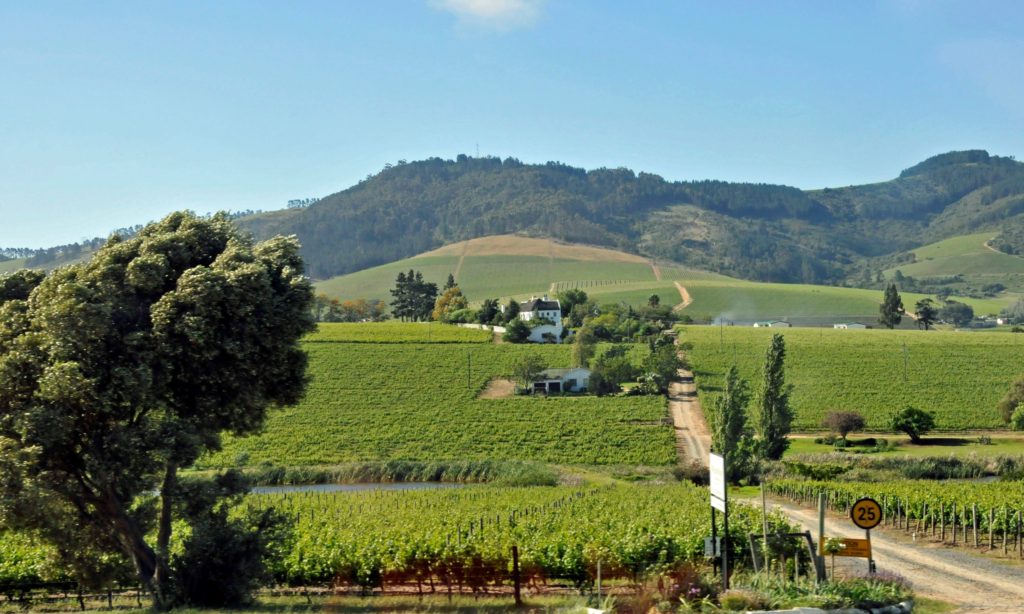
Cape Town, South Africa, is worth a trip all by itself. And no trip to Cape Town is complete without at least a day trip to the nearby wine country.
In 1652, the Dutch East India Company established a supply station on the southwest tip of Africa to service its ships traveling to and from India. Within a few years, the governor of what became known as Cape Town planted white and red muscatel grapes to produce wine for the sailors. The first wine was produced in 1659. In 1865, the subsequent governor, Simon van der Stel, purchased a 1900-acre estate just south of Cape Town he named Constantia. Much of the estate was devoted to the production of wine grapes. In 1679, van der Stel established the nearby town of Stellenbosch (“Stel’s Bush”). In the 1690s, Huguenot refugees from France settled in Stellenbosch and began planting grapes, which they turned into wine. Because of the Huguenot’s superior wine-making skills, their wines were very popular and Stellenbosch became the center of the South African wine industry.
Today, about 300,000 South Africans are engaged in the production of grapes and wine. The areas near Cape Town produce more than three percent of the world’s wines, making South Africa the ninth or tenth largest wine producer in the world. Two towns within an hour of Cape Town are famous both for their wines and for their unique characters. Stellenbosch is known as the “town of oaks” because of its many oak trees, planted by the original settlers for producing wine barrels and furniture. Stellenbosch retains much of its Dutch character and includes about 200 wineries, producing some of South Africa’s best wines. Nearby Franschhoek (“French Quarter”), settled by the Huguenots in 1688, has retained its French character and is considered the culinary capital of the entire Cape area.
Comments are closed.